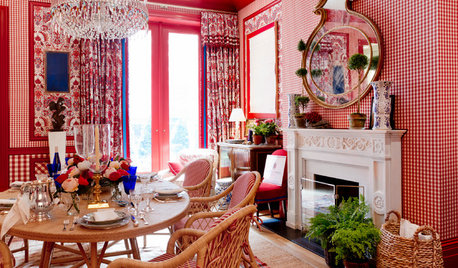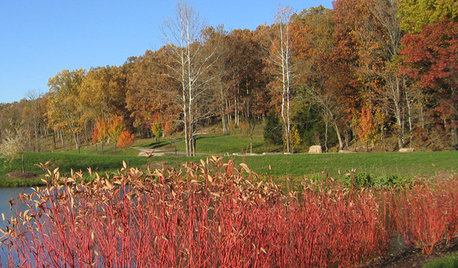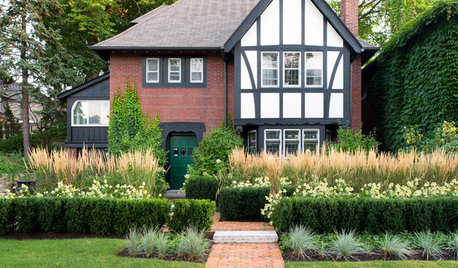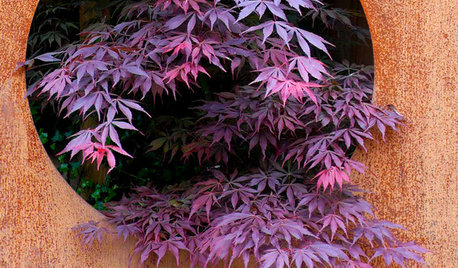Hey all,
I've searched as much of the archives as I can to get an answer for my Beech tree but I couldn't get to what I really need to know. So...
In April I purchased and planted a Fagus sylvatica 'Red Obelisk' to replace a rather pathetic Butternut that had only been there since October 2011. The Beech (my first) was B&B (I've always been happier with potted trees) and nicely dormant.
I planted it after the heat wave had ended, and it didn't break bud until after the frost of Easter, so it avoided all that jazz.
It has leafed out, but is now looking rather sad. The spot it is in sunk slightly after planting so the crown is below grade by about 2'. The soil itself is a mix of loamy clay & organic matter & a touch of sand.
I had no reason to worry until we had a day of thunderstorms and I got up in the morning to see the base standing in water, about an inch of it. I purposely went to work and didn't bother to get rid of the water to see if it was still there when I came home that night, which it was not. Apparently it was gone about 5 hours after I left the house.
I looked at the tree a few nights later, and it looked really sad and wilted. I went away for 5 days and was convinced it was dead, but upon my return it was still alive. The shoots had extended a bit, but still pointing downward.
The tree looks better in the morning when it is cool, but in the evening it looks a little pathetic, and the stems are soft. It is just REALLY taking its time leafing out.
My concern is really more of a 'peace of mind' kind of thing. Especially from those of you who have been growing European Beech cultivars. They are all over my neighborhood, mainly Dawyk Purple and gold, tri-color, coppers, etc. They seem to do just fine, no matter where they are planted, they love the climate and yearly precipitation.
But they are all totally leafed out and looking like mid July trees, while mine is stuck in late April status (and it is May 11 today...)
Our climate... southwestern Ontario, USDA zone 5B/6A, same heat as the Detoit area and northern Ohio. Lots of thunderstorms in summer and lake effect snow in winter. The soil is predictably soggy in February-March as winter is ending. The soil everywhere is clay-loam, some clay is very tight, other places it is crumbly and fine, with a layer of sand beneath the clay. The earth is very rich.
So... am I nuts or is the tree just slow because it was B&B this Spring. Like I said it's my first B&B. I know Beech hate wet feet but the earth is not soggy, just takes a few hours to drain away excessive rain.
Any advice? Should I mound soil up near the base (but keep it away from the crown/trunk)? I can't move it, at this stage it would kill it as the root mass nearly fell apart when it was planted. Even if it was planted at grade, it is still the same soil as everywhere else here, and the other Beech trees do exceptionally well....
Just wondering if I've done something wrong or if I done everything right..? Are Beech always like this after planting from B&B?
http://photobucket.com/albums/ee479/Plantboy79/Garden/6591DECA.jpg
http://photobucket.com/albums/ee479/Plantboy79/Garden/2109774F.jpg
http://photobucket.com/albums/ee479/Plantboy79/Garden/FFA513B7.jpg
http://photobucket.com/albums/ee479/Plantboy79/Garden/8E658AF4.jpg
http://photobucket.com/albums/ee479/Plantboy79/Garden/91F9A487.jpg











Adam PolakOriginal Author
Adam PolakOriginal Author
Related Professionals
Surprise Landscape Architects & Landscape Designers · Hyattsville Landscape Architects & Landscape Designers · North New Hyde Park Landscape Architects & Landscape Designers · Hartford Landscape Contractors · Stamford Landscape Contractors · Bellefontaine Neighbors Landscape Contractors · Dedham Landscape Contractors · Lake Zurich Landscape Contractors · North Haven Landscape Contractors · Sun City Center Landscape Contractors · Ferguson Landscape Contractors · Lenoir Siding & Exteriors · Oak Park Siding & Exteriors · Racine Siding & Exteriors · Grand Rapids Decks, Patios & Outdoor Enclosurescalliope
Adam PolakOriginal Author
mackel_in_dfw
ken_adrian Adrian MI cold Z5